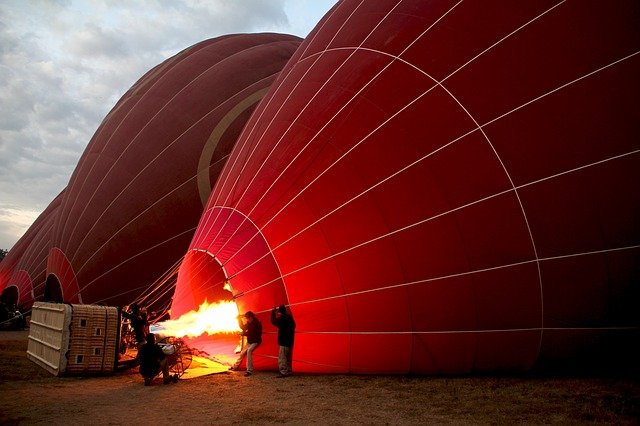Have you ever wondered to yourself, “How do hot air balloons work”? I mean, sure, hot air rises, but is that it? How does it really work? How do they steer the balloon? How fast and how far do they go? Can they fly for hours, days…weeks? What’s it made of? Well, while the experience of flying in a hot air balloon is certainly magical, hot air balloons operate on some pretty basic scientific principles.
So let’s start with the balloon itself. For now we will just focus on three structural elements: the envelope, the basket, and the burner system. The fabric that we think of as the “balloon” part of the balloon, is called the envelope. The envelope’s fabric needs to be both strong and lightweight and is often made of Dacron or ripstop nylon, which are both synthetic fabrics. In the envelope we have a pyrometer which lets us monitor the heat so as not to damage our fabric’s integrity. If balloonists treat their fabric well, the envelope can last 300-500 flights hours.
The basket is typically made out of rattan, and it hangs beneath the envelope supported by cables or Kevlar lines, and it carries the pilot and passengers (in our case, 6 passengers and a pilot). Rattan makes an ideal material for a basket. Not only is it a handsome aesthetic choice, but it is also flexible, lightweight, and shock absorbent.
